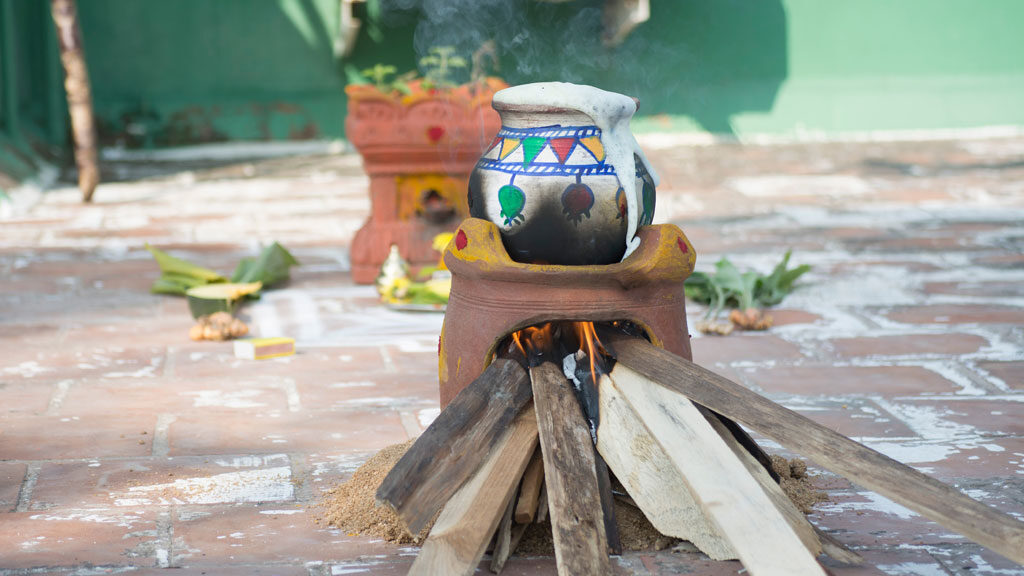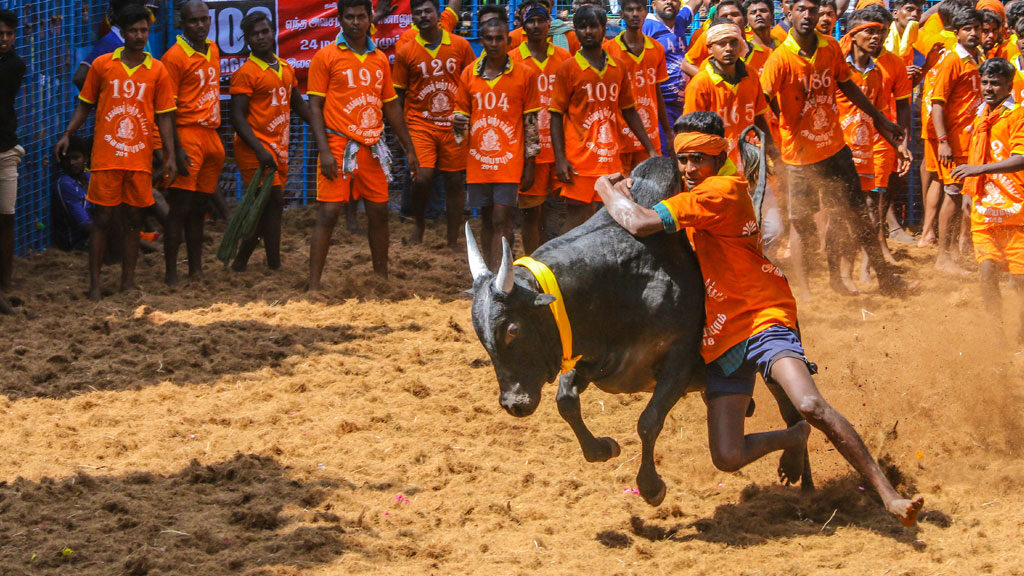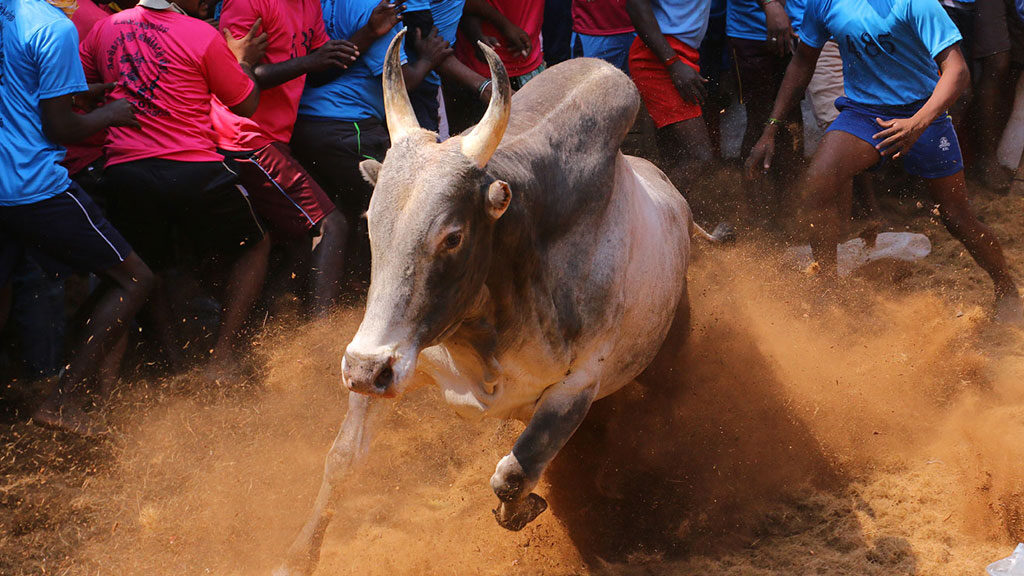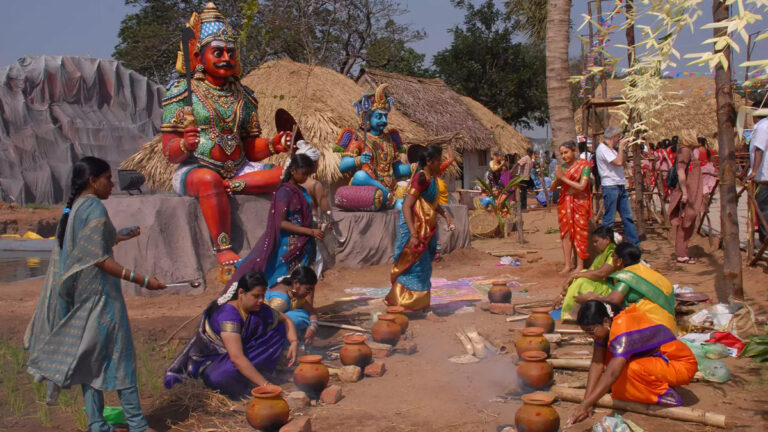It is a well-known truth that India is made up of many cultures, with people bonded by a strong feeling of nationalism, a shared history, and a special connection to celebrate festivals such as Diwali, Christmas, and other notable Indian events. But have you ever seen people gather to celebrate a holiday that does not fall under the label of “religion?” This celebration has no central belief in “deities”; rather, it focuses on connecting the people of South India, particularly those of Tamil Nadu, with ideals of tradition and culture, ignoring their religion, caste, class, and ethnicity. This festival is a “Month full of celebration” rather than a yearly or monthly celebration. The “Thai month festival” is filled with several celebrations. Check out the blog for fascinating information about “Thai Month” and the science behind it that defies imagination.
What is Thai month?
Thai month corresponds to the tenth month of the traditional Tamil calendar (mid-January to mid-February) in the Gregorian calendar. This month is highlighted by a popular harvest festival that is observed throughout India but under different names. But in Tamil Nadu this festival is popularly celebrated as “Pongal” and “Makar Sankranti” in North and South India. Interestingly, people in Tamil Nadu gave this holiday a special name, “Tamizhar Thirunaal” (festival of Tamilians), because it is celebrated by all Tamils, regardless of religion, caste, or class. This celebration is held to express gratitude to nature, which plays an important role in the physical, emotional, and economic well-being of people.
Why Thai month is considered very special?
Agriculture has always been the greatest and most important source of income in Tamil Nadu, hence farmers are at the heart of this celebration. Thai month is significant since it symbolizes the season of reaping crops that were sown from May to August the previous year. People experience financial challenges throughout the crop growth stage, forcing them to wait until the reaping phase begins. And when the time comes, their hearts and pockets will be overflowing with happiness. That is why people consider this month particularly unique and celebrate the start of their prosperity with a classic Tamil phrase known as “Thai Piranthal Vazhi Pirakkum,” which indicates that when the Thai month begins, it opens the door to innumerable great opportunities and good fortunes.
Believe it or not, contemporary science, like Tamil culture and tradition, originated 2000 years ago. To understand the practicality, one does not need to have an understanding of modern science, which currently rules the globe. Instead, he must have a simple but in-depth awareness of Tamil culture and customs, which can be observed during the Pongal festival, to bring the truths to light.
Bhoghi – A bonfire acting as a barrier
Bhogi is the first and most important day of the Pongal festivities. People make it a point to deep clean their homes on Bhogi day or the day before. They dust the cobwebs, scrub and mop the floors, eliminate outdated items, and finish by painting the entire structure. This outcome gives the house a new look, representing a “new beginning.” People used to store harvested crops inside their homes because there were no warehouses back then. To maintain the quality of crops, people thought it was vital to clean and paint their houses to get rid of the bacteria and fungus that had built up in the walls during the rainy and winter seasons (November – December).
People start a bonfire in their front yard after dark and burn old and redundant household objects. They engage in this activity because they believe that by burning old objects, all evil forces from the past are also burnt. As a result, individuals can embark on a new chapter of their lives with hope. The famous Tamil expression “palayana kalithalum puthiyana puguthalum,” which means “the old goes away and the new comes in,” backs up the aforementioned notion. Some people also throw turmeric into the fire to act as a germicide, protecting them from viral and bacterial diseases that can spread in the chilly climate.
Preparation for the Pongal festival – Adding Health benefits to aesthetics
Decorations are the first step in preparing for Pongal. According to Tamil traditions, people decorate their homes with various flowers and leaves, the most prominent of which are avarampoo, kooraipoo, neem leaves, and mango leaves. Avarampoo is good at treating kidney infections and flushing toxins from the body. Kooraipoo is a stunning small white flower with anti-inflammatory, anthelmintic, and antibacterial qualities.
Neem leaves and mango leaves are well-recognised for repelling insects and purifying the air. As the environment shifts from the rainy and cold seasons (August-December) to a new weather condition in January, people with weakened immune systems may be vulnerable to various infections. As a result, individuals utilize medicinal herbs as house decor so that they can recover quickly while staying at home. This demonstrates that the Tamil tradition is capable of providing additional health advantages to aesthetics.
Surya Pongal – Progression in people’s well-being
One of the most important days of the Pongal celebration is “Surya Pongal,” which takes place the day after the Bhogi celebration. Typically, on this day, people wake up at dawn, adorn their front yard with beautiful kolams (rangoli), create a sweet dish known as Sakkarai Pongal, and give it to the sun as a token of thanks. In particular, this day contains many wonderful things to notice and appreciate in Tamil heritage. During this day, people choose an ideal outdoor area and cook in a manpaanai (clay pot) over firewood. They place newly cultivated sugarcane next to the pot, which represents a plentiful harvest and is thought to bring sweetness and abundance in the coming days.

Also Read:- Popular places to visit in Tamilnadu for Jallikattu
The clay pot is wrapped with ginger and turmeric and decorated with attractive designs. Sakkarai Pongal is made from a type of rice called “Pacharisi,” (raw rice) milk, jaggery, lentils, and other items. When it begins to overflow from the pot, people shout with happiness, “Pongalo, Pongal,” which means “let it overflow ever,” and symbolically represents the constant overflow of joy and good fortune that the following years bring. Surya Pongal is not only beautiful, but it also has wonderful scientific explanations that evolved in a bygone age.
Scientifically, it is known that the sun is much closer to Earth in January than in other months. As a result, the sun’s rays land directly on the body as well as on food, providing plentiful vitamin D advantages. That is why people like to cook Pongal outside so that the food becomes energised. Consuming this Pongal also benefits from its anti-inflammatory and antioxidant characteristics, as the neck of the pot is tied with turmeric and ginger, and these properties are easily absorbed while the meal boils.
Pongal is incomplete without sugarcane. So individuals must include it in their diets on this day because it is high in vitamin C and helps to improve the immune system. Although there are other types of rice, people choose “Pacharisi” (raw rice) to prepare Pongal. Raw rice contains anti-bacterial properties and natural supplements that aid in the treatment of asthmatic problems and body heat-related health issues caused by weather changes from August to December. It is very interesting to learn how Tamil tradition and celebration are deeply rooted in people’s well-being.
Mattu Pongal – A Day to Honor Man’s Agricultural Assistant
Many popular festivals in India pay tribute to animals.” But did you realize that Tamil Nadu established the foundation for animal celebrations? A common Tamil expression is “Seiyum thozhile deivam,” which signifies that a person’s work is similar to that of God. The people of Tamil Nadu have always valued and revered their job above everything else. Because agriculture was the major occupation during ancient times, people designated a specific day to remember Surya Pongal.
On the other hand, a day named “Maatu Pongal,” which falls a day after Surya Pongal, was set aside to honour and thank the animals that helped and accompanied humans in agricultural work. Maatu Pongal translates to “cattle pongal,” and on this day, all cattle are bathed and decorated with painted horns, flowers, and ornaments. Then they are served a gourmet lunch and a selection of items. Later, the cattle are escorted in a procession, which includes music and dance. This allows people to express their gratitude and admiration for the creatures that contribute to human well-being and success.
Kaanum Pongal – “View” the sea and “see” the Kins
Kaanum Pongal is the final day of the Pongal celebrations. The Tamil word “Kaanum” translates as “viewing” or “seeing.” Kaanum Pongal can be understood in two ways: traditional and modern. To comprehend the traditional way of celebrating Kaanum Pongal, one must think back in time. Humans are said to have first lived near bodies of water such as lakes, ponds, and rivers in ancient times. People today come and “view” beaches to commemorate and honour the location from which their ancestors originated. Marina Beach in Chennai is the most popular and busy beach in Tamil Nadu during Kaanum Pongal. Marina Beach in Chennai is the most popular and crowded beach in Tamil Nadu during Kaanum Pongal, with thousands of families flocking to hundreds of stalls, games, rides, and other entertainment.
Kannum Pongal can be easily understood from a modern perspective. Currently, the concept of the nuclear family has expanded greatly, allowing individuals to focus solely on their work. People’s hectic lifestyles have caused them to overlook spending time with family, friends, and relatives, gradually distancing themselves from intergenerational ties. In Tamil culture, both family-related and social relationships are highly respected. It also promotes bringing family members closer together, both in times of sorrow and entertainment. People in the past were raised in joint families where they learned values and felt a feeling of connection.
Since joint families are becoming increasingly rare, Tamil culture requires people to meet and “see” all of their close relatives, friends, and family at least once a year during Kaanum Pongal. On this day, they meet, exchange sweets, and spend time together or go on a short excursion to keep the tie and culture strong. Through this context, we can understand that Tamil culture has always popularised unity through the spread of the sayings “Koodi Vazhnthal Kodi Nanmai,” which means unity is beneficial, and “Ondru pattal undu vazhvu,” which means if we live in unity, we can progress in harmony.
Pongal Festival Highlights: What You Shouldn’t Miss:
Though people encounter a variety of experiences at this festival, there are some occurrences that the brain quickly recalls when they hear the word “Pongal Festival.”
Jallikattu, the Game of Valour:
Have you ever heard of a sport in which people demonstrate their valour? If not, Tamil Nadu invites you to see something extraordinary. Pongal Festival and Jallikattu cannot be regarded as distinct things. Nobody in Tamil Nadu can envision a Pongal celebration without Jallikattu. Manjuvirattu, also known as Jallikattu or “Earu Thaluvuthal,” is a world-renowned sport that began centuries ago. This incident occurs during the “Maatu Pongal.” In this event, an Indian-breed bull known as “Kangeyam Kaalai” is released into a mob of people, and numerous competitors try to hold the bull’s hump with both arms. If a contestant holds the riotous bull’s hump for as long as possible and causes the bull to lie down, he is regarded to have tamed the bull, so claiming victory.

Also Read:- Most Important Festivals of Tamilnadu That Are Worth Watching and Experiencing
Jallikattu was banned a few years ago as the concept of this game was misconceived as animal cruelty. As Tamil culture does anything with a scientific intention, it has also concealed a science behind Jallikattu. Scientifically, if the gene of a particular organism is vigorous, the next generation of this particular organism will be healthy. This healthy gene also has the possibility of passing on to upcoming generations. The same theory can be applied to Jallikattu as well.
During the Jallikattu sport, if a bull runs more than 100 metres despite obstacles, has a towering hump, and behaves aggressively by never allowing the competitor to grip the hump, the bull is regarded as the most powerful and healthy. In this sense, these bulls are taken to mate with cows to produce healthy calves and milk.
Jallikattu was also held to meet the prospective groom. Traditionally, ladies of marriage age had the right to choose their spouses by visiting and observing the young men who participated in the Jallikattu event. It is believed that whoever tames the bull will be considered strong, bold, and courageous and that subsequent generations will have the same potential, with the woman and her family eventually considering that person a groom.
Six best places to watch Jallikattu 2024 in Tamil Nadu

Also Read:- Most Popular Temples in Tamilnadu You Must Visit On Your Spiritual Journey
1. Alanganallur, Avaniyapuram, Palamedu – Madurai
2. Tiruvapur, Venthanpatti near Ponnamaravathy – Pudukkottai
3. Thammampatti – Salem
4. Sravayal near – Karaikudi
5. Kanduppatti near Sivagangai
6. Pallavarayanpatty near Cumbum
Cultural events – The Joy of celebration
Dance is fundamentally happy and celebratory. The excitement of the Pongal celebration brings to light the traditional Tamil dance that existed long before musical instruments were invented. The most popular traditional folk dance in Tamil culture is called “Kummi”.”Kummi” means “small” or “soft” in Tamil. This refers to the soft and graceful movements used in dancing. It is mostly performed by women who create a circle and then engage in activities such as rhythmic clapping, singing, and dancing with minimal movements in a synchronised manner.
Other traditional Tamil dance forms include Oyilaatam, in which the performers have two kerchiefs and tie bells to their ankles in response to the tinkling sound of the bells, and thavil (a barrel-shaped percussion instrument), in which they perform moves. Karagattam is a difficult yet fascinating kind of dance in which the dancer carries a ‘Karagam’ (pot) on top of their head and dances to the music playing. Mayilaattam: In this type of dance, the performers dress in peacock attire and perform.
All of these dance performances not only celebrate art and heritage but also promote a sense of community. It also promotes happy hormones in both performers and watchers, improving their mood and providing a sense of well-being as they begin a new year.
Best Places to witness Pongal cultural events – DakshinaChitra Heritage Museum, Chennai and a Few villages in Tamil Nadu.
Engrossing Games: Tamil Nadu Contests
The ancient Tamil people infused “valor” in many aspects of their civilization. Sports, which are now viewed solely as “entertainment,” were originally regarded by ancient cultures as a means of instilling spirit and valour in humans. The finest example of the aforesaid setting is “Jallikattu,” as previously indicated. Similarly, the Bullock Cart Race, commonly known as the “Rekla Race,” is a popular Mattu Pongal event. It originated in Tamil Nadu’s historic agricultural past. It takes considerable proficiency and courage to maintain good control over the carts, but it is feasible for those who have mastered those qualities. The fast pace of the carts, the sound of fans cheering, and the victorious moment are all must-sees for anybody who enjoys entertainment.
Uriyadithal – Tamil Nadu’s Pinata Smash
It is a traditional and entertaining game in Tamil Nadu. “Uri” refers to a rope net stretched from the ceiling for storing milk and butter. The word “adithal” implies “to hit or strike.” This game includes an earthen pot that is tied above 20 feet. This container is filled with water, flowers, and occasionally gifts. The players are blindfolded and given a long stick. The organisers would distract the participants from reaching for the pot by pouring turmeric water on them. Even after each obstacle, if the competitor destroys the pot, he has won. Many institutions insist that this game be played during the Pongal celebration.
So what are you waiting for? Embark on an unforgettable getaway to Tamil Nadu for this festive season and explore the state with the warm hospitality of people in Tamilnadu have to offer.
Tamilnadu Tourism offers you the best Tamilnadu Tour Packages and customized tour packages to treat you with an unforgettable vacation in Tamil Nadu.
Enquire now and grab the best deals and offers!

